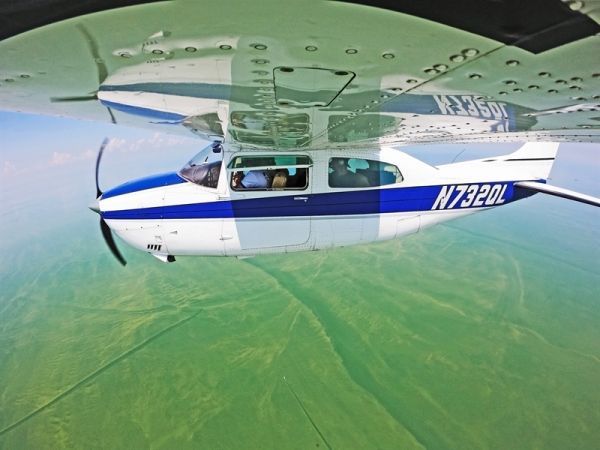Two underwater robots will be gliding throughout the western Lake Erie basin this week, as NOAA and its partners at the Monterey Bay Aquarium Research Institute (MBARI) test technology to autonomously monitor and measure the toxicity of harmful algal blooms in the Great Lakes.
The robots — known as long-range autonomous underwater vehicles (LRAUVs) — will be deployed through August 26. During that time, one robot will search for patches of algae that may be toxic, so that scientists know how far the bloom extends and where it’s most intense. The other robot will carry a 3rd generation (3G) Environmental Sample Processor (ESP) — known as NOAA’s “lab in a can” — to measure microcystin, a potent liver toxin produced by the cyanobacteria that cause harmful algal blooms in the Great Lakes.
The activities of the two robots will be coordinated throughout the tests. Part of the toxin-detecting robot’s course is pre-programmed to visit particular sites that are regularly sampled by NOAA scientists, but it will also have a chance to demonstrate its ability to target areas that the first robot detects as having particularly high concentrations of algae — areas that are suspected of being toxic.
The goal of these tests is to see how these underwater vehicles perform in the field and what tweaks need to be made in order to transition these tools into a permanent part of NOAA’s efforts to forecast, monitor, and understand harmful algal blooms in the Great Lakes. This is NOAA’s second year testing the LRAUVs, and the first year that two vehicles have gone out simultaneously.
Continue reading at NOAA.
Image via NOAA.


